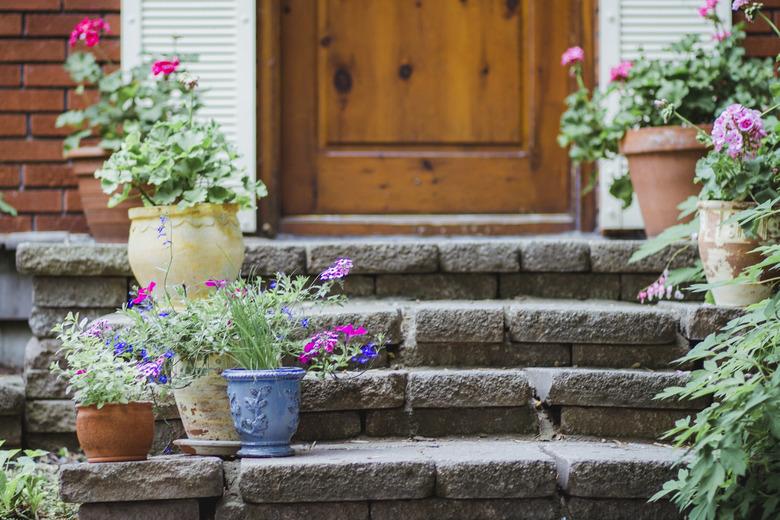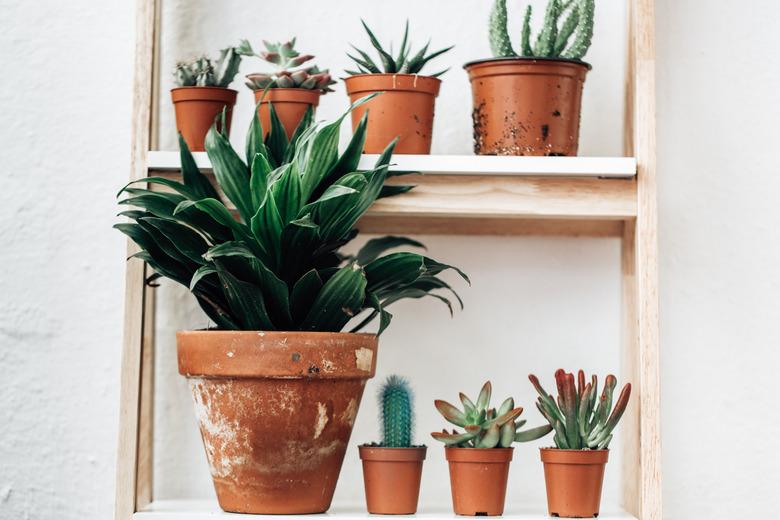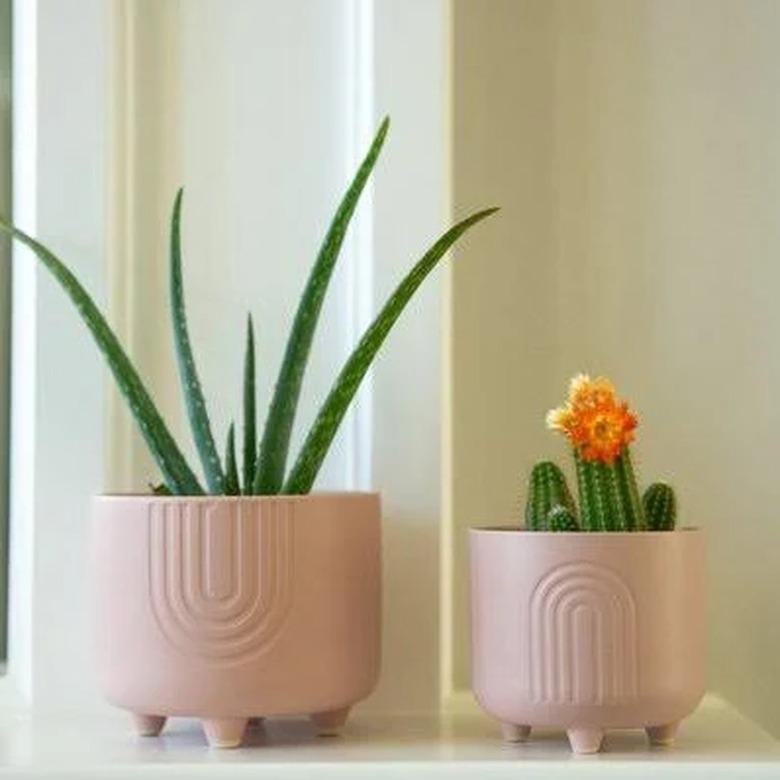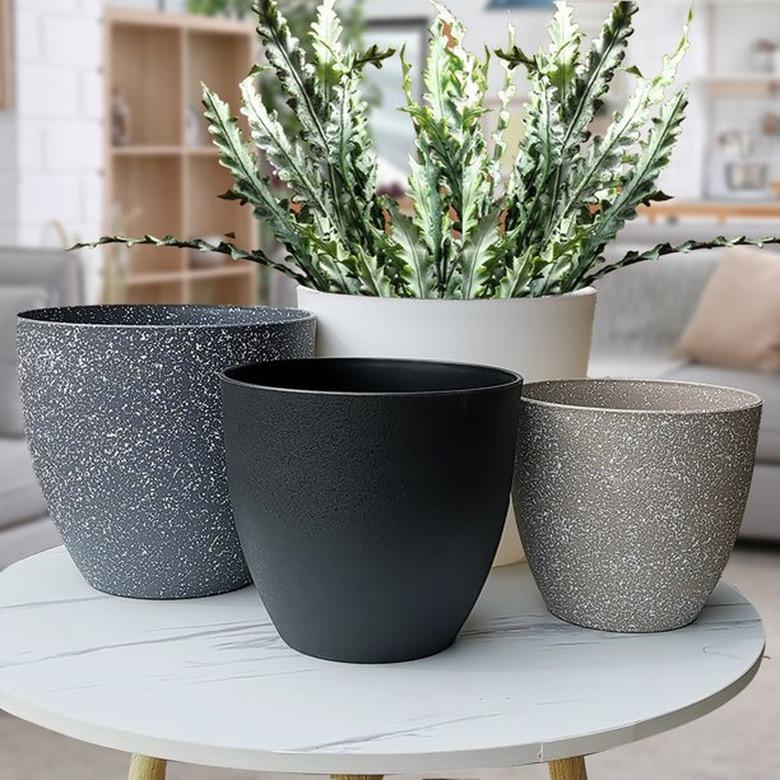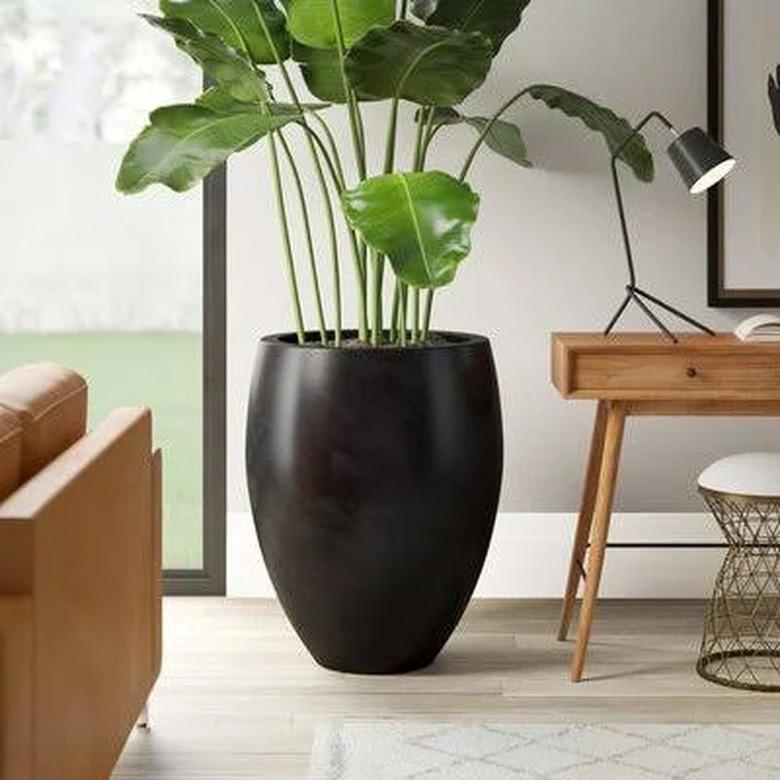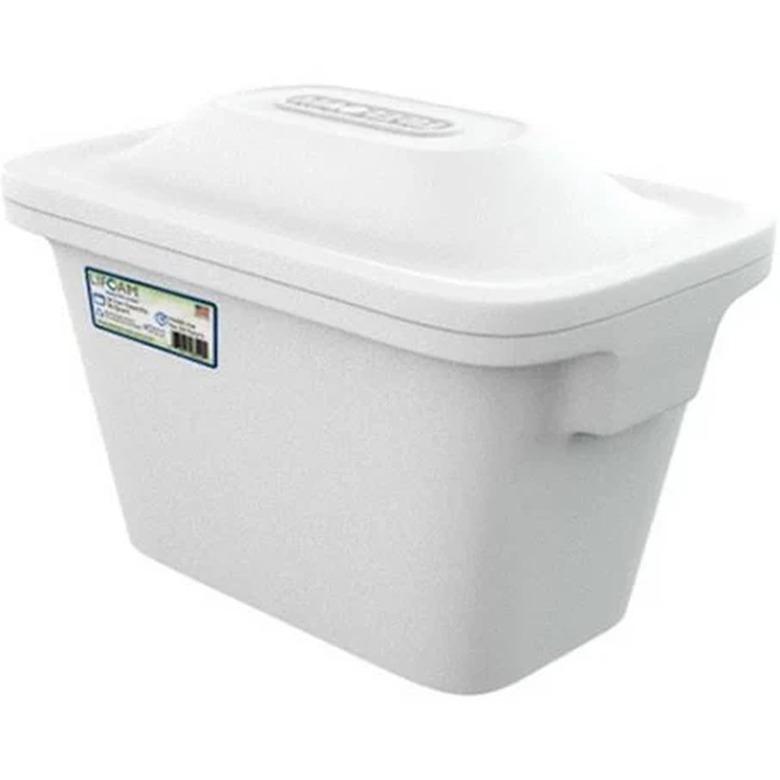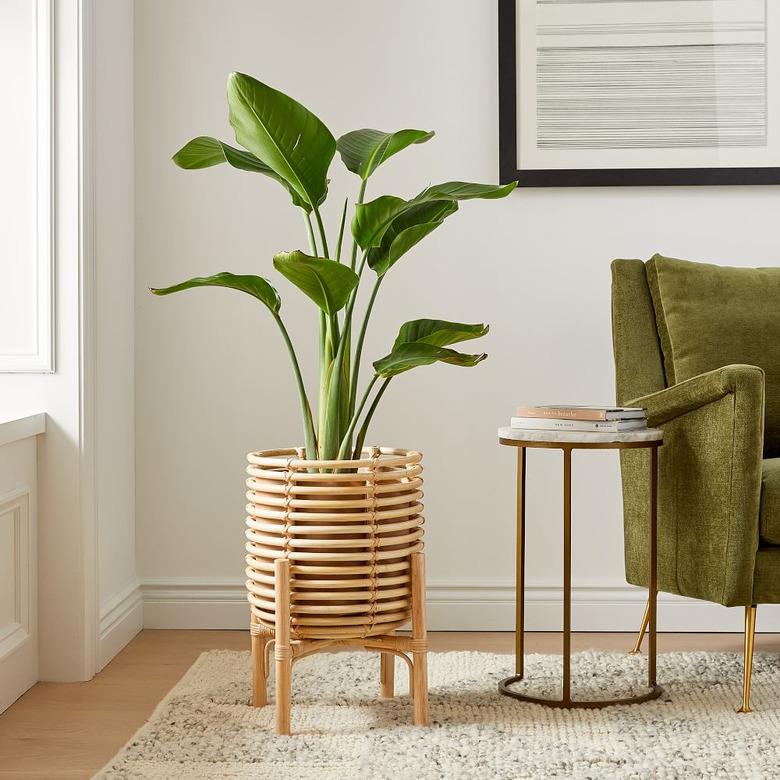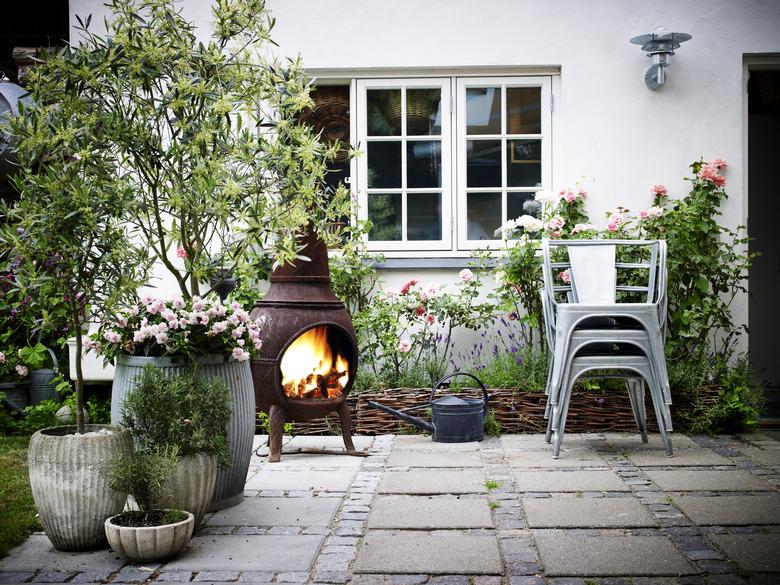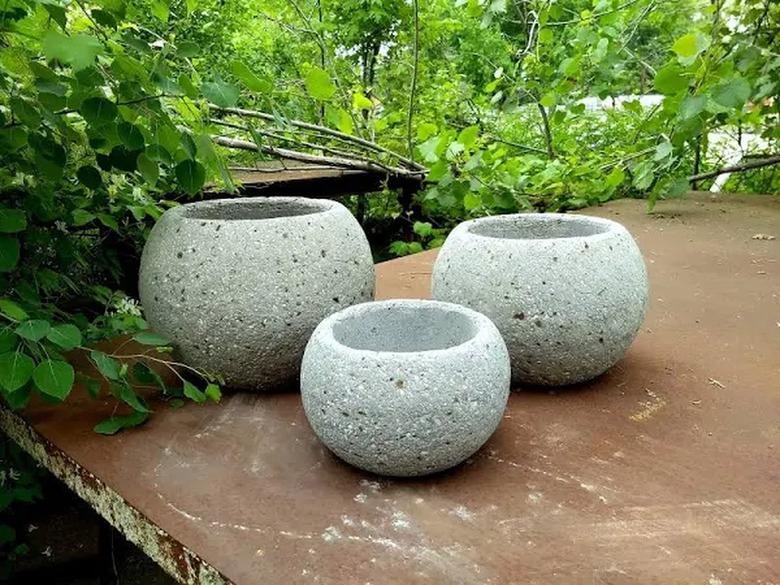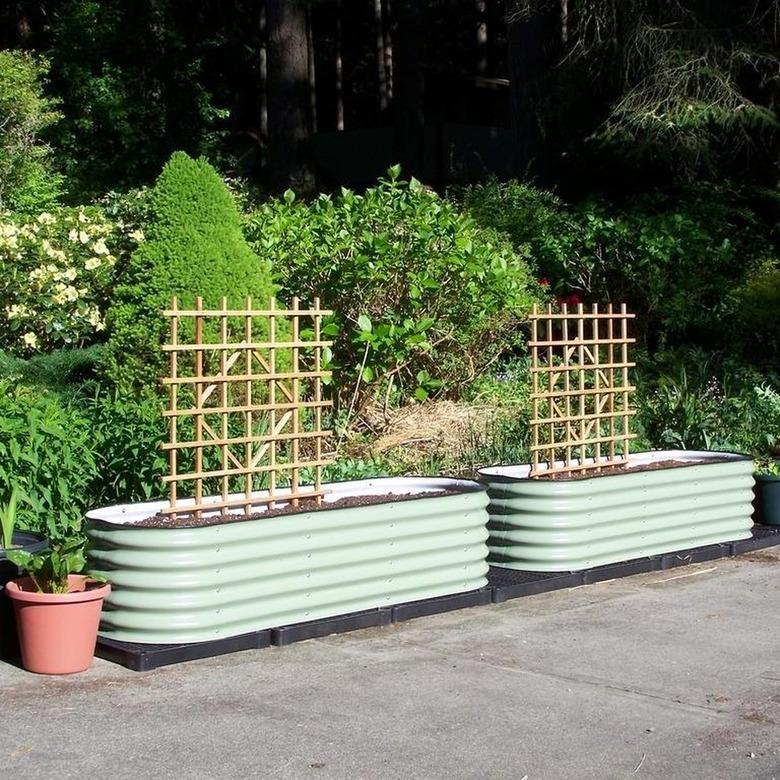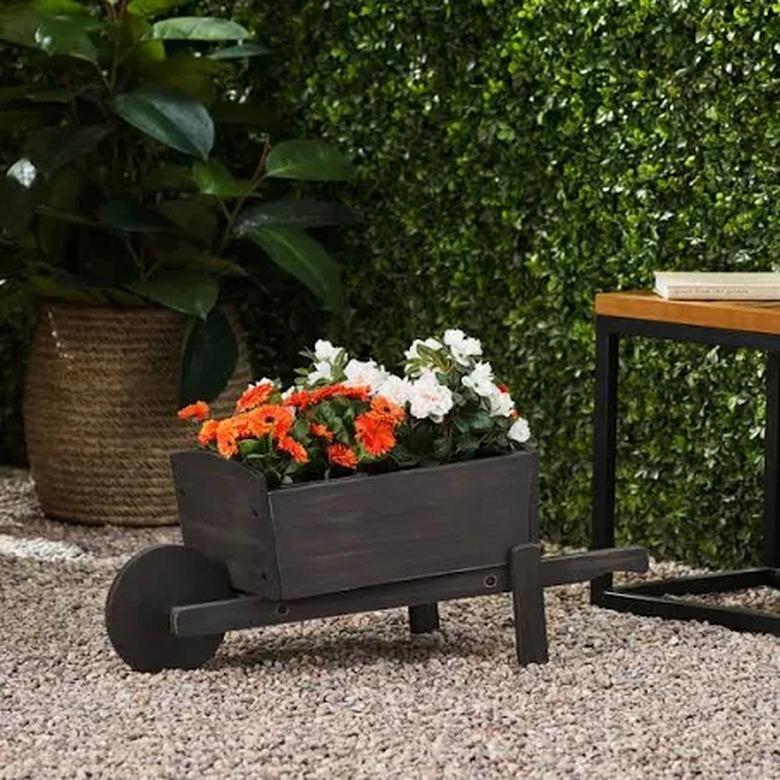The 9 Best Plant Pots For Container Gardening
Choosing plant pots for your outdoor container garden takes more consideration than you might think. The shape, size and material used for the pot affects not only gardening success but also the aesthetic of your container garden. There's also the question of budget, as a simple 12-inch round pot can range in price from about $10 for a plastic pot to more than $100 for a glazed ceramic planter pot. Before buying pots for outdoor container gardening, review these considerations.
Plant Pot Shape
When it comes to choosing an appropriate shape for a plant pot, depth is the most important consideration. The height of a container should be based on the types of plants it will grow. Many annuals are quite shallow-rooted, and these can be planted in shallow, broad containers, like the 5-inch-deep pots often used for pansies and succulents. Other flowering plants and root vegetables have deeper root systems that require taller, deeper pots. Most dwarf trees and shrubs will need containers that are quite deep.
Planters with tapered sides, where the top is much wider than the base, may not be the best choice for tall, top-heavy plants that may tip in the wind, nor do they work very well for climbing vegetables trained on a trellis or cage since these too can be susceptible to the wind.
Containers used for window box plantings will obviously be long and narrow, but it makes sense to choose the deepest window boxes that are practical. The more soil your window boxes hold, the better the root system and the better the plants will retain water.
Plant Pot Size
While no plant resents a pot that's larger than necessary, it's also something of a waste to spend money on a pot and potting soil that's more than what is needed. It's fairly common for beginning gardeners to choose pots that are overly large, forgetting that they are not only expensive but hard to move around once filled with soil. Plants in mixed container gardens can be crowded in a lot more densely than you might imagine, and the visual impact will be greatly improved.
Before you go shopping for containers, the following guidelines will help you determine the types and number of plants appropriate for various container sizes:
- 10-inch (2 1/2- to 3-gallon) container: one strawberry plant; one leaf lettuce, Swiss chard or bush bean plant; six to nine carrots; four turnips; one small herb plant; two or three flowering annuals
- 14-inch (6- to 7-gallon) container: three or four pole beans on a trellis; four to six flowering annuals; one dwarf shrub, berry bush or citrus tree
- 18-inch (14- to 15-gallon) container: one broccoli, cauliflower, eggplant or pepper plant; one bush tomato with support; two masses of green leafy vegetables; mixed selection of herbs; mixed selection of flowering annuals
- 24-inch (24- to 25-gallon) container: one vining tomato with cage; one summer squash or cucumber plant; one fig tree, dwarf peach or nectarine tree; one raspberry or blackberry bush; one ornamental shrub, such as a hydrangea, shrub rose or butterfly bush; one evergreen shrub
- 30-inch (30-gallon) container: one espalier fruit tree, such as apple, pear or plum; one dwarf cherry or apple tree; one sweetcorn plant; one pumpkin plant; one rhubarb plant
1. Terra-cotta Plant Pots
Terra-cotta is the common material used for classic fired-clay pots, with the characteristic reddish-brown color and matte finish. Terra-cotta pots lend a classic appearance to the garden and work well in virtually any garden style, from rustic to highly formal. Moderately priced, terra-cotta pots are fairly long-lasting when handled carefully, but they can gradually succumb to weathering, flaking, and cracking especially if they are stored outside.
Terra-cotta is a material that is slightly porous, and moisture will wick through the clay. Thus, plants in terra-cotta planters will need to be watered more frequently than in other types of pots. Terra-cotta is also quite a heavy material, which is something to consider with very large pots, especially if you want to move them around on a deck or patio.
2. Ceramic Plant Pots
Ceramic pots are another form of clay-fired container, but in this case, the clay has been finished with a shiny, impervious glazing that is fired for extra hardness and waterproofing. Planter pots made from glazed ceramic are top-of-the line planters, both in cost and in style. Ceramic makes a very elegant planter.
Ceramic planters are more durable than terra-cotta, but they are still made of brittle clay and can be cracked. They are even heavier than terra-cotta, so they are not the best choice for window boxes or hanging planters. While more weatherproof than terra-cotta, ceramic pots should still be stored indoors over winter. Never allow them to sit full of soil over freezing winters.
3. Plastic Plant Pots
At the other end of the scale from terra-cotta and ceramic, you will find plastic pots. Plastic plant pots have two main advantages: They are very inexpensive, and they are very light. Because they are very light, plastic planters are ideal for window boxes and hanging planters. On a patio, large plastic pots are much easier to move around than similarly sized terra-cotta or ceramic containers.
Rigid plastic is somewhat brittle, however, and can be subject to cracking, especially after the containers have aged for a couple of years. Sunlight can cause the colors to fade, though it is possible to restore plastic pots by spray painting them. Plastic plant pots are sometimes looked down upon because they tend to look phony and cheap, but there is a role for plastic containers in almost every outdoor container garden. If you grow a lot of potted plants, plastic can save you a lot of money over the cost of terra-cotta or ceramic planters. When filled with trailing plants, the plastic material is often not even visible.
4. Fiberglass Plant Pots
Another synthetic material that is a big step up from plastic is fiberglass. These containers use fiberglass strands bonded with petroleum-based resins to form plant pots. They are often smooth-sided containers, although fiberglass can also be used to mimic the look of many natural materials. Fiberglass planters are considerably more expensive than molded plastic but are usually still cheaper than ceramics.
These pots are considerably stronger than simple plastic, and the colors do not fade as rapidly. Its strength and its light weight make fiberglass a good choice for window boxes. Smooth fiberglass planters work well in modern, contemporary garden designs.
4. Polystyrene Foam Plant Pots
Another synthetic material now increasingly used for outdoor planters is polystyrene foam, which is quite convincing in its ability to mimic high-end ceramics and terra-cotta. These pots may be almost impossible to distinguish from clay-based pots until you lift them. They are extremely light, making them an excellent choice for big pots that you need to move around on a deck or patio. Storing a large polystyrene pot is a breeze compared to moving a huge ceramic pot into storage for the winter.
Polystyrene can be formulated and shaped to look like almost any material, including concrete or granite, but this is by no means a cheap alternative, either in cost or appearance. These pots can cost almost as much as the finest ceramic pots, and they are now used in the most elegant of gardens.
Other than the high cost, there are relatively few drawbacks to polystyrene pots. Heavy use can dent or mar the material, and these containers are so light that they can be blown over in high winds if they are not fully filled with soil. With responsible use, polystyrene pots typically last just as long as terra-cotta or glazed ceramic pots.
5. Wood Plant Pots
Wood is a classic, natural outdoor building material that makes for great rustic-looking plant containers, such as oak barrel planters or cedar window boxes. Wooden planters are moderate in cost; they are less expensive than polystyrene or ceramics but more expensive than plastic. While planters made of decay-resistant wood, like redwood or cedar, will last longer, all wood planters — even those treated with sealers — will decay over time. Wooden containers simply don't have the longevity of other materials.
6. Concrete Plant Pots
Concrete makes for very, very durable plant pots, but they are usually quite expensive as well. Concrete can be molded into all kinds of shapes and sizes, but the material is best suited for planters that will remain stationary. Even a 10- or 12-inch pot can be too heavy to move around a patio at will once it is filled with soil and plants, and a large concrete patio urn really can't be moved at all once positioned.
This is one of the most versatile of all building materials. Molded concrete can create very elegant, statuarylike planters with an architectural appeal, or it can be smooth-finished for a very modern look. Although the concrete used in planters sometimes uses a "lightweight" formulation, this is a relative term when it comes to concrete. These are still very heavy planters.
Though durable, concrete is not an immortal material. Left outdoors and filled with soil over harsh winters, they can crack due to the expansion of freezing, excess water. It is best to empty concrete planters and, if possible, turn them upside down or store them for the winter.
7. Hypertufa Plant Pots
Hypertufa is a mixture of concrete and peat moss (and sometimes perlite or vermiculite) used to create a moldable material that is a favorite of the crafting crowd. Plant pots and troughs made of hypertufa look like rough-textured, natural stone but at a fraction of the weight. Hypertufa is usually used to make rustic-looking plant containers molded in whatever fashion you choose. Hypertufa is not as durable as solid concrete, but it can be an excellent choice if you want to try your hand at crafting your own plant pots.
8. Metal Plant Pots
Metal containers used for planters can range from galvanized urns to ornate and formal enameled steel pots. Metal is not a common material for plant pots, but it can lend a very elegant look when the pots are made of molded or stamped copper or steel. It can make for a delightful rustic appearance if the planter is a found object, like a galvanized watering trough or soup cauldron.
Ideally, outdoor planters should be made of a metal that resists weathering, such as galvanized steel or copper. Ordinary steel or iron will gradually corrode and break down, though the rust patina on these planters can be very attractive until the metal rusts through. Aside from its penchant for corroding and its relatively high cost, the biggest drawback of metal plant pots is that they absorb heat. Don't use metal planters to grow vegetables and flowers that prefer cool soil.
9. Found Objects as Plant Pots
Recent years have seen an explosion of use in found objects and flea-market discoveries as plant containers for the garden. Items ranging from baby shoes to antique wheelbarrows have been converted to plant containers. Before throwing soil into a random item found at a garage sale, give thought to its suitability.
Consider volume. The found container needs to have sufficient volume for the plants you want to grow. An antique bronze baby shoe might work for a miniature succulent or moss specimen, but almost nothing else will grow in it. An 8-foot-long galvanized stock tank, on the other hand, calls for a dwarf tree or another large, tall plant to offer the proper visual scale.
Consider drainage. Containers that are meant to hold water will need to have holes drilled in them to allow rainwater to escape. This is no great problem for a galvanized wash tub, which easily accepts holes bored in the bottom, but with a porcelain toilet or bathtub (yes, these are sometimes used), it can be considerably trickier to add drainage holes.
Consider longevity. There's nothing wrong with using cloth or even paper or cardboard items as planters; just be aware that they will break down quickly when exposed to soil and weather. If longevity is critical, then make sure to choose galvanized metal, ceramic or porcelain containers to serve as garden pots.
Consider toxicity. Railroad ties, old tires or painted wood can make fine raised beds in the garden, but each of these can potentially leach hazardous materials into the soil — creosote or pesticides in the case of railroad timbers, petroleum byproducts in tires or lead in old paint. This may not be a big problem for growing flowers, but think twice about growing vegetables or fruits in containers made from materials that might be toxic.
